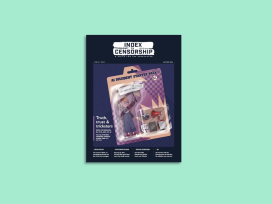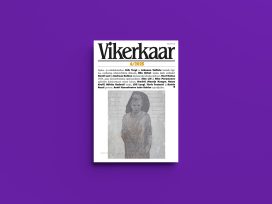Surprise correlations between distinct texts are like chemistry. They spark transformations of thought. When reading Agri Ismaïl’s personally informed writing for Glänta on warfare in the Kurdistan Region in Iraq, I was compelled to revisit Anthony Downey’s academic text for Springerin on algorithmic-based weapons. I had remembered several shared references between the two but wasn’t expecting so many common impressions.
The writers’ approaches to analysing the Middle East are poles apart: Ismaïl’s bricolage of historical and contemporary accounts evidencing the persecution of Kurdish people is the antithesis of Downey’s methodical unravelling of AI-programmed weapons that ‘predict’ the future. But both clearly assert that the region is a repeated target: ‘a laboratory for war and its associated technologies’ (Ismaïl), ‘a testing ground for Western technologies’ (Downey).
And it was their investigations of how war imagery and imaging has mutated that compelled me to delve further. The more I looked, the more cross-references I found to the degenerative path of visuals and visualization objectifying human lives to death.
Live coverage
Unsurprisingly, both writers locate the Gulf War as a turning point in the imaging of modern warfare. The Kurdish author based in Sweden describes his childhood experience of watching the war televized ‘live’ in the US: ‘as soon as the first cruise missiles had landed in western Iraq, visible to us through green-hued night vision footage, we spent most of that holiday at the hotel glued to CNN’s 24hr broadcast’. Understandably, obsessive indoor viewing took over from sightseeing. ‘For the first time, the war on TV was fought in what, to us, seemed like real time,’ writes Ismaïl, acknowledging the broadcasting’s inherent subjectivity: the footage had been highly censored. News of conflict in his homeland wasn’t new to the nine-year-old, but this was his formative experience of imagery ‘which created a simulation of war without bloodshed or human casualties.’
The British professor of Visual Culture in the Middle East and North Africa cites artist Harun Farocki, whose Eye / Machine series (2000-2003) interpret ‘operational images’ from 1991: ‘Farocki observed that a “new policy on images” had ushered in a paradigm of opaque and largely unaccountable methods of image production that would inexorably inform the future of “electronic warfare”.’ The application of algorithmic computing technology, as Downey describes, returned ‘discrete, autonomous procedures – related to targeting in particular – from within so-called “black box” apparatuses.’
Imaging from targeting cameras on bombs reported their own event. The notionally photographic image and computer simulation had become indistinct. And remote onlookers, party to these God-like views, were sitting at a safe distance in domestic spaces.
Constant flow
Twenty-five years on and ‘real-time’ war imagery had intensified its reach, having migrated to smaller, multiple screens. Ismaïl describes his experience of the Battle of Mosul in 2016 as ‘a row of emoji bouncing across the screen, past the smoke, over the sand and the soldiers.’ Watching war news streams – the epitome of doom scrolling – is compulsive. And social media infantizes traumatic responses.
I’m reminded of Taste of Cement, the 2017 documentary film following refugees from Syria – also in part Kurdish – in Beirut, Lebanon, building high rises while their homes topple. After long days of labouring, the workers move down into the basement, spending their evenings watching scenes of destruction, videos from their mobile phones reflected in their eyes – melancholy inducing repeatedly self-inflicted doses of violence on violence. The collective fixation on the one TV screen in a Los Angeles hotel room has morphed into hand-held, personally accessible imagery.
Ismaïl is critical of ‘this flow of immediate images’: it ‘provides no context, no background, no explanation for what we are seeing. It is both thrilling and dull, and in many ways this technology is playing catch-up to war.’
Future strikes
Downey tracks the digitization behind today’s warfare, its development from imaging physical locations to creating imaginary targets – not fictional sites, as such, but places and moments before any sign of violence has been recorded. Downey calls this anticipated military tactic an ‘occupation of the future’: remotely powered AI that predicts the enemy’s moves before they have decided to strike, hitting out in advance.
‘This ambition to “see further”,’ writes Downey, ‘supports the neo-colonial ambition to see that which cannot be seen – or that which can only be seen through the algorithmic gaze and its rationalization of future realities.’
What is of course missing from these ‘contemporary theatres of warfare’, Downey recognizes, is ‘their real-world impact’. But Ismaïl rightly warns of the postcolonial dead end facing the Kurdish people: ‘The space they inhabit isn’t real, not in the way that nation states are real,’ he writes. ’It is a borderland, a form of limbo. Yes, real people live there: people with dreams and hopes and fears. But the land they live on, that they’re geographically bound to, is and has been a no man’s land where nation states can act with impunity.’
What better rational could there be as invitation to find out more about this region and its people, to ‘see’ them, starting with two well-researched perspectives?






